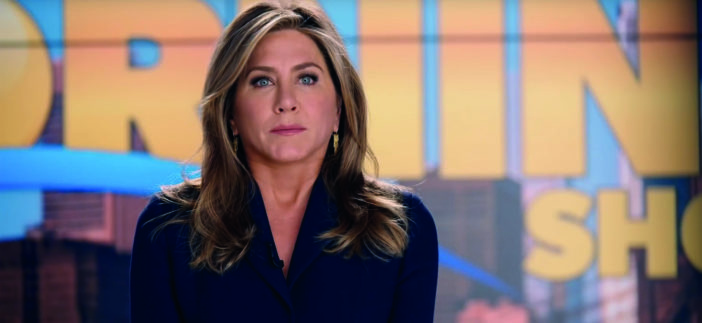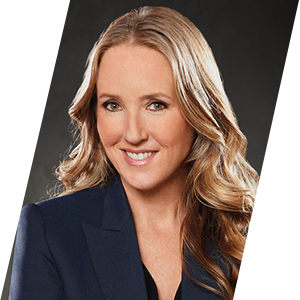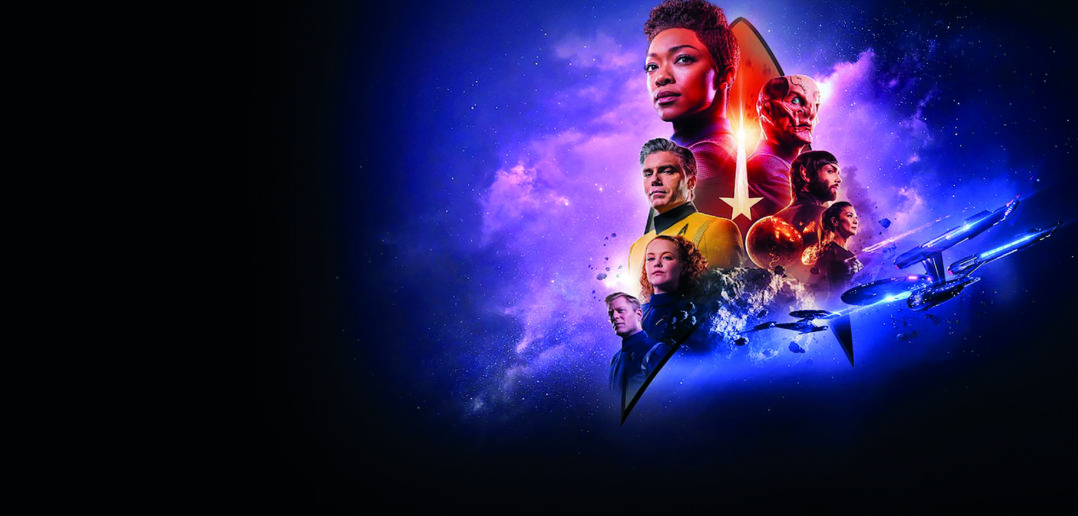Netflix currently dominates the streaming world, but strong competition and newcomers are set to change the balance of power among streaming platforms. Find out how, when and why in the article below.
Netflix the not-so-almighty
No one would suggest that production, distribution and TV technology are simple businesses. But from a consumer perspective, the remarkable growth of global SVOD platform Netflix is pretty easy to understand.
“Netflix filled a gap in the market,” says Brett Sappington, senior research director and principal analyst at consultancy Parks Associates. “Prior to its launch, most consumers around the world had a choice of watching free services or buying big-bundle pay-TV packages. Suddenly, Netflix came into the picture with a low-price streaming service that offered high-quality shows in a convenient form.”
In general, the legacy players were slow to respond because they were protecting existing businesses or were prevented by domestic regulators from fighting back. “And in the meantime, Netflix just kept improving its offer,” Sappington says. “More original content, astute acquisitions, box sets, easy user interface, easy cancellation and access across devices all explain why the service has reached 151 million subscribers globally.”
With an annual programme budget of $15bn, further growth for Netflix seems assured. Markets including India are seen as having high potential, with five new India-targeted original series recently added to the platform. In a recent conference call to investors, Netflix’s chief content officer Ted Sarandos said: “We’ve been seeing steady increases and engagement with our Indian viewers that we think we can keep building on.”
But there are also signs that the streaming platform is going to find the next few years much tougher.
“Netflix has led the way,” Sappington says, “but it no longer has a clear run at the market because of the growing number of powerful companies entering the streaming business, Apple, Disney and AT&T Time Warner being the most high-profile examples.”
Ovum senior analyst Tony Gunnarsson agrees: “If the last decade was dominated by the story of Netflix and disruption, then the next will be about subscription-based linear services. Every traditional broadcaster and telco is lining up with some kind of OTT streaming service.”
Netflix’s most recent financial results suggest a shift might already be taking place. With subscription growth missing analyst forecasts — subs actually fell by 130,000 in the US — the company saw its share price slide by 15%. Netflix CEO Reed Hastings responded by blaming recent price increases and the lack of high-profile content launching in the second quarter. Pointing to the third- and fourth-quarter launches, which include the third season of Stranger Things, season seven of Orange Is The New Black and the second outing of Mindhunter, he said: “We’re building amazing capacity for content. Our rate of investment is extremely high. If investors believe in internet television, which I think is an easy one to get, then our position is very strong.”
Nevertheless, the scale of the share price slump suggests investors are becoming more cautious about the prospects for the platform. Aside from the challenge presented by rivals, the company also has to factor in the cost of content and talent. While $15bn a year may sound like a lot, that needs to be shared across dozens of markets, including the US. Underlining the point, a high-end series like The Crown comes in at $10m-$13m per episode, while a recent five-year deal with Ryan Murphy (Glee; American Crime Story) is reputed to have cost $300m. Of course, all of this is good news for producers, talent, agents and, in some cases, content distributors.

Season two of Netflix hit The Crown
SVOD competition is coming: Hollywood and the US studios
A lot of TV-industry talk this year has focused on The Walt Disney Company and Time Warner’s plans to enter the streaming business as rivals to Netflix. In the case of the former, there will be a new streaming product called Disney+, which will lead with franchises including Marvel, Star Wars and the Disney animation classics. For a monthly subscription of approximately $7.00, Disney+ will also offer the many films and TV shows that it secured when it bought 21st Century Fox’s entertainment empire for $71.3bn. These include all 30 seasons of The Simpsons, for example. There will also be 25 original series in the first year, starting with Star Wars: The Mandalorian.
Assessing the launch, Ovum’s Gunnarsson expects the hype around the new service to give it a major boost on home soil:
“In the US, it will be massive — the most exciting thing since Netflix. The bond with US consumers is so strong that I see a lot of people taking it on top of Netflix.”
He is more cautious about international, however: “Disney has so many pre-existing partnerships that it will take time for it to work out how Disney+ fits in. They won’t be able to deliver a one-size-fits-all strategy internationally, which will limit their speed of growth.”

Star Wars: The Mandalorian, an original for Disney+
AT&T-owned Warner, meanwhile, has revealed that its own streaming service will be called HBO Max, trading on the brand equity it has built up over many years with HBO. Launching early next year, the HBO Max service will cost $15.00 a month and offer 10,000 hours of content. This will consist of both classic shows, including sitcom Friends, which will be available on HBO Max in North America, and new series. Examples of the latter include Dune: The Sisterhood, an adaptation of Frank Herbert’s sci-fi series, and Love Life, a romantic comedy starring Anna Kendrick.
There is also room for acquisitions, as a new deal with BBC Studios proves. Unveiled in August, HBO Max has acquired the exclusive streaming rights to BBC Studios’ sci-fi series Doctor Who, as well as The Office, Top Gear and Luther.
As with Disney, Gunnarsson says the HBO brand, combined with Warner’s rich content portfolio, will appeal to consumers. But he argues that AT&T’s progress will be slowed down by internal integration. Aside from the various iterations of HBO already available, “AT&T has streaming services like Crunchyroll, Boomerang, DC Universe and DirecTV Now”, he adds. “I’m not pessimistic, but I think that will slow down the company’s DTC [direct-to-consumer] growth.”
A critical point about both services is that they are taking back some shows previously licensed to Netflix — Friends is a high-profile example. Netflix’s Hastings has put a positive spin on this, saying it will “free budget for more original content. From what we’ve seen in the past, when we drop strong catalogue content, our members shift over to enjoying our other great content.” Whether that rationalisation will still hold true with the loss of iconic Disney franchises is less clear, however.
NBCUniversal also stated recently that it will launch a streaming service in April 2020. But not to be overlooked is that the US studios are already battling for share against Netflix. Sony Pictures and Time Warner, for example, are partners in Asian VOD platform Hooq, alongside Singtel. Discovery has a burgeoning DTC business, while Lionsgate is also active globally via its StarzPlay platform. In July, it acquired the new Batman prequel drama series Pennyworth for multiple markets, adding to a portfolio that also includes Killing Eve and Catch 22.
Not to be overlooked either is that Disney is the majority owner of Hulu as well as Star India’s Hotstar platform — meaning that the Mouse House’s threat to Netflix extends beyond the roll-out of Disney+.
CBS has also made decent inroads in the US with its CBS All Access and Showtime platforms, which are on course to have a combined 25 million subscribers by 2022. The services are available in North America and Australia, although there is no news yet on further expansion.
During his MIPTV keynote, Armando Nunez, president and CEO of CBS Global Distribution Group, said it is unlikely CBS will just “flick the switch” and launch a global streaming business in the same way as Disney. Instead, he said CBS would “pick and choose where it makes sense to launch direct to consumer”.

StarzPlay has acquired Batman prequel Pennyworth
Pay-TV platforms: still in the game
Pay TV has suffered at the hands of competitively priced SVOD services like Netflix. But it would be a mistake to think of it as a dying or defeated business. Simon Murray, principal analyst at Digital TV Research, forecasts an additional 81 million pay-TV subscribers between now and 2024, taking the total global market to 1.1 billion.
“Cord-cutting will continue, with the US losing nearly 10 million subscribers between 2018 and 2024,” he adds. “But it’s not all bad news: 110 countries will gain subscribers. From the 81 million additional pay-TV subs, 29 million will come from India, 16 million from China and eight million from Indonesia.”
The long-term prognosis is that the pay-TV platforms will struggle to keep customers tied in to big, expensive bundles of channels. But they have found various ways to combat the rise of the SVOD players — offering adjacent services such as telephony and broadband, for example, or providing greater access to low-cost channel packages, the so-called skinny bundles.
Ramping up investment in exclusive content has also been key. Comcast-owned European pay-TV giant Sky, for example, has spent heavily on premium drama in recent years, complementing its strength in sport and movies. In 2019, it launched a division called Sky Studios and promised to double content spend. “This is a transformational development,” says Sky CEO Jeremy Darroch. “Sky Studios will drive our vision to be the leading force in European content development and production.”
Sky is one of several pay-TV players that has also taken the fight to Netflix by launching its own streaming service, Now TV — and don’t forget that its sister division NBCU is talking about moving into streaming. It is a similar story at Nordic Entertainment Group (NENT). Indeed, president and CEO Anders Jensen described NENT as a streaming company during his MIPTV 2019 keynote, saying: “We believe in free and pay TV and invest in it, but streaming is where the consumer is going — so that’s how I see NENT.”
NENT faces tough competition in Scandinavia from Netflix and HBO, but has enjoyed success with its streaming platform Viaplay. Echoing Darroch, Jensen says survival will require investment in local original content: “That will be our key credible differentiator from platforms like Netflix. I believe we need to be giving people around 40 originals a year, so we need to invest more and open up more partnerships.”
The FAANGs: the roaring fivesome
Of the disruptors that make up the acronym ‘FAANG’ (Facebook, Apple, Amazon, Netflix and Google), Amazon has provided Netflix with the keenest competition to date via its Prime Video subscription service. But comparing the two is not easy, because Amazon is more diversified, active across areas from e-commerce to cloud services. Amazon Studios head Jennifer Salke alluded to this at the latest Television Critics Association’s press tour, when she described Prime Video as a “perk” for subscribers, along with fast and free delivery.
“We’re not in the volume business,” she said. “We’re in the curated business.”
The word ‘curated’ should not, however, be mistaken for niche. Currently, Amazon spends $7bn a year on music and video content, compared to Netflix’s $15bn. It has also taken a prominent position in the fast-growing esports market through its acquisition of Twitch.
Aside from competition for customers, Amazon’s key impact on Netflix is to inflate the cost of content, since both are in the market for high-end IP and proven talent. For example, Amazon is currently in the process of creating one or more series based on JRR Tolkien’s Lord Of The Rings. Securing the rights is reckoned to have cost the company $250m.
As for the other FAANGS, Apple has spent the last year talking up its soon-to-launch subscription service Apple TV+. The company is reckoned to be spending around $1bn on content from the likes of Oprah Winfrey, Steven Spielberg and Reese Witherspoon. It will also use its platform to allow users to subscribe to and watch content from third-party services, including HBO, Starz and Showtime — but not Netflix.
In terms of originations, Apple is planning to offer a family-friendly approach to content. Drama titles in the planned Apple TV+ line-up include The Morning Show, starring Jennifer Anniston, Steve Carell and Reese Witherspoon. The platform has also ordered Little Voice, a half-hour romantic dramedy about New York City 20somethings; a reboot of Amazing Stories; and See, a space drama starring Aquaman’s Jason Momoa.
Apple TV+ is not Apple’s first entry into the TV market. It already offers aggregated content in some 100 countries from around 150 content companies via an Apple TV app. In its most recent results conference call, Apple CEO Tim Cook said monthly viewers on the app were up 40% year-on-year in the US. Despite its heavyweight content investment in Apple TV+, Ovum’s Gunnarsson says Apple has been low key so far about launch and rollout. That said, “it has the muscle to change that at any time”, he adds. “It could have a major impact on the market simply by bundling a free six-month subscription to Apple TV+ with hardware.”

Jennifer Aniston stars in The Morning Show, headed for AppleTV +
Facebook is also reckoned to be spending $1bn-2bn a year on content, but so far has not attempted to compete in the SVOD arena. Instead, it has pursued an ad-based model by commissioning content for its video service Watch. A prime example is its reboot of MTV’s The Real World. As with Google-owned YouTube, Facebook’s strength in video ad revenue perhaps explains why it has been slower to put content behind a paywall. According to research firm eMarketer, Facebook generated $6.8bn in US ad revenue last year, while YouTube generated $3.36bn.
Having said this, YouTube has been trying to find an entry point into subscriber-based content over the last couple of years. In 2019, it launched YouTube Music and YouTube Premium in 17 countries across the Americas, Europe and Asia. YouTube Premium members receive access to the music service and a slate of YouTube Originals shows and movies, including Cobra Kai, Impulse, F2 Finding Football and The Sidemen Show.

Discovery’s David Zaslav

DAZN’s James Rushton

Amazon Studios’ Jennifer Salke

Netflix’s Reed Hastings

Netflix’s Ted Sarandos
Free-to-air domestic broadcasters
Having seen their linear businesses eroded by the SVOD services, Europe’s leading free-to-air (FTA) broadcasters have started to fight back with their own SVOD services. In the UK, public broadcaster the BBC and commercial rival ITV are set to launch BritBox, a service that will offer a mix of classic shows and exclusive originals for £5.99 a month. This follows the launch of BritBox in North America, which is reckoned to have 500,000 subs.
ITV chief executive Carolyn McCall calls the launch of BritBox UK “a milestone moment”. She adds:
“ITV and BBC have made, and continue to make, programmes that reflect and shape British culture and creativity. We look forward to bringing the best in past, present and future British programming to viewers all in one place.”
BritBox content at launch will include dramas Broadchurch and Gentleman Jack, as well as unspecified originals from 2020.
Analysts including Park Associates’ Sappington do not expect BritBox to outperform the global SVOD giants, but they see no reason why it cannot exist as a viable number two or three in the UK market. “One thing that our research shows,” Sappington says, “is that consumers are more comfortable paying for content from brands they are familiar with. HBO, Discovery and the BBC are all likely to be beneficiaries of this preference.”

BritBox content will include long-running hit BBC sci-fi series, Doctor Who
Ovum’s Gunnarsson agrees that second- or third-choice SVOD service may be viable: “There was a piece of research recently [from Hollywood Reporter/Morning Consult]that suggested US households are willing to pay $21 a month for streaming services.” This, he adds, indicates there is room for services on top of a basic Netflix or Amazon Choice package.
Over in France, a similar venture called Salto is being developed by France Televisions, TF1 and M6. First announced last year, the launch of Salto has been delayed by French and European competition authorities — much to the frustration of France Televisions CEO Delphine Ernotte. With Netflix piling on another one million subscribers during the delay, she says it is “totally absurd” that Salto has been stuck in regulatory limbo. The best guess currently is that Salto will launch in late 2019 or early 2020.
In Germany, ProSiebenSat.1 and Discovery announced plans for an SVOD platform, then invited others to join them. Public broadcaster ZDF agreed, but commercial heavyweight RTL is going it alone with its TVNow service.
The goal of RTL’s CEO Bert Habets is to grow the number of subscribers to the SVOD services to three million and revenue from VOD to €360m by 2021. RTL will invest at least an additional €350m in expanding its streaming offerings over the next three years, including €300m to be invested in content across all genres. In addition to originations, the company has also made some high-profile acquisitions. These include the latest series from AwesomenessTV, for example Zac And Mia, Light As A Feather and Tagged, secured in a deal at MIPTV.

Zac and Mia, as seen on RTL’s TVNow
Geographic threats to Netflix
Netflix also faces competition from well-resourced pan-regional challengers such as Televisa’s Blim in Latin America, MultiChoice Group’s Showmax in Africa and iFlix (backed by Sky, Liberty Global, Hearst Entertainment and Yoshimoto Kogyo) in Asia. There are also large territories where Netflix has been unable gain any traction. The most obvious of these is the 1.4 billion Chinese market, where the VOD business is dominated by powerful domestic platforms, notably Alibaba’s Youku, Tencent and Baidu’s iQiyi.
All three of the big Chinese platforms have pursued a similar path to Netflix by kickstarting their businesses with acquisitions then shifting to original production. Analysis from Ampere suggests iQiyi’s annual content spend has risen from $6.8m in 2011 to $3.13bn in 2018. To date, iQiyi has produced around 250 originals and is starting to have success distributing its content abroad. In May 2019, it licensed crime drama The Thunder to South-East Asian channel Red by HBO. For now, Netflix has no intention of entering China, though it does license titles, including Stranger Things, to iQiyi.
Russia is another market that has not succumbed to Netflix’s appeal. Here, the market leader is streaming service ivi, which is attracting attention from potential purchasers, including mobile operator MTS. Talks between the two this year valued the platform at around $1bn.
Ivi is funded through advertising and subscriptions. The platform increased its revenues by 62% in 2018, to RUB3.9bn ($5.9m), mainly through the doubling of the number of subscribers — 1.2 million users pay monthly subscriptions or per title. And following the paths of other leading global streaming companies, ivi has started investing in original content through the creation of Ivi.Originals, a new division that will drive production.
The first streaming services in Russia emerged about 10 years ago with Okko, Amediateka, Megogo and Tvzavr the top 4 after ivi. The platforms offer national and global content, except for Amediateka, which focuses on premium international drama from, for example, HBO, Fox and BBC Worldwide.
And as is happening in other parts of the world, traditional media companies in Russia have launched streaming platforms of their own in recent years. Yellow Black and White, a leading national producer and distributor, recently launched Start.ru, a platform offering exclusive content via monthly subscriptions.
TNT Premier, the online platform launched by Gazprom Media, offers top shows from the holding company’s various entities, including leading entertainment channels TV-3 and TNT. And a group of Russian media holdings is launching the brand-new streaming service more.tv towards the end of this year. More.tv will combine ad-supported and subscription-based models.
Russia’s finance, tech and telecoms companies are also getting in on the act, with the countries largest bank Sberbank; tech giant Yandex; and the country’s leading mobile operator MTS all making moves on the streaming goldmine.
Specialist platforms
Aside from geographic obstacles, Netflix has to face a myriad of niche or genre-specific challengers — everything from anime channels like Crunchyroll to sports-leagues platforms run by the likes of Major League Baseball. The most significant of the latter is DAZN, which describes itself as the world’s first pure-sport live and on-demand streaming service. With backing from Access Industries, DAZN has acquired a large portfolio of premium sports rights and runs services in Germany, Austria, Switzerland, Spain, Italy, the US, Canada, Japan and Brazil. Among recent developments, the platform announced a new distribution partnership with Discovery that will see Eurosport 1 HD and Eurosport 2 HD made available to DAZN subscribers in Austria, Germany, Italy and Spain.
DAZN has also started investing in original content, recently unveiling a new landmark interview series called The Making Of (9 x 25 mins) featuring Cristiano Ronaldo, Neymar Jr and Jose Mourinho. James Rushton, chief revenue officer of DAZN, says:
“Our original programming strategy is about creating iconic content that complements our live-sport offering. It’s about driving engagement, retention and mass brand awareness around the biggest sporting cultural moments.”
Discovery president and CEO David Zaslav, meanwhile, says that his company’s recent long-term content deal with the BBC positions it to become the world’s “definitive natural-history and factual streaming platform”. Speaking during the company’s first-quarter earnings call in May 2019, Zaslav said that now was “the perfect moment to create this type of service, high in both entertainment value and global impact and relevancy”.
Touching on a point made earlier, Zaslav predicted that people will subscribe to two or three services and churn between them based on the content available at any given time. He also pointed out that BBC content is coming off Netflix to feed the new service, reinforcing the challenge that Netflix will have holding on to sought-after acquired content.
Not to be overlooked in the grand scheme of DTC content is the issue of content piracy — though there is good news on this front, according to Ampere Analysis. “On average, in markets where either catch-up or SVOD video viewing has risen the most, piracy has experienced the biggest drop,” says Ampere research director Richard Broughton.
“With the growth in the all-you-can-eat legal services, users no longer need to turn to illegitimate sources to get their viewing fix.”
This article was written by Andy Fry, edited by Julian Newby, and appears in the MIPCOM Preview Magazine.
Want to discover new content, forge partnerships, negotiate financing and distribution agreements, find co-production opportunities and explore the latest trends in the industry?
Attend MIPTV and MIPCOM!
This and more in the MIPCOM Preview Magazine.
Read the full version below:
Read more on this topic in the articles below:
What content do TV investors look for?
LatAm focus: the global television demand report for 2018




